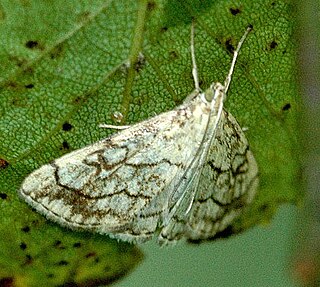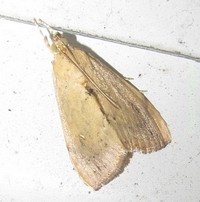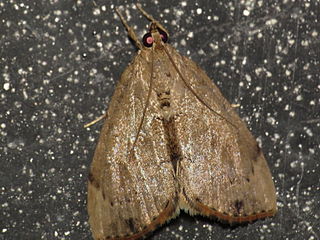Related Research Articles

The Group of Eight (G8) was an inter-governmental political forum from 1997 until 2014. It had formed from incorporating the country of Russia into the Group of Seven, or G7, and returned to its previous name after Russia was disinvited in 2014.

Infiniti is the luxury vehicle division of Japanese automaker Nissan. Infiniti officially started selling vehicles on November 8, 1989, in North America. The marketing network for Infiniti-branded vehicles included dealers in over 50 countries in the 2010s. As of 2020, there are 25 markets served by new car dealers. The main markets are the U.S. and China.
I'm a Celebrity...Get Me Out of Here! is a British reality TV series in which a number of celebrities live together in a jungle environment for a number of weeks, competing to be crowned "King" or "Queen of the Jungle".

Vodafone Group plc is a British multinational telecommunications company. Its registered office is in Newbury, Berkshire, England and its global headquarters is in London. It predominantly operates services in Asia, Africa, Europe, and Oceania.

The Gulfstream G550 is a business jet aircraft produced by General Dynamics' Gulfstream Aerospace unit in Savannah, Georgia, US. The certification designation is GV-SP. As of January 2016, there were 450 G550s in service. The final G550 commercially available unit is to be delivered in 2021. A version of the airplane with reduced fuel capacity was marketed as the G500.

The G20 is an international forum for the governments and central bank governors from 19 countries and the European Union (EU). Founded in 1999 with the aim to discuss policy pertaining to the promotion of international financial stability, the G20 has expanded its agenda since 2008 and heads of government or heads of state, as well as finance ministers, foreign ministers and think tanks, have periodically conferred at summits ever since. It seeks to address issues that go beyond the responsibilities of any one.

Climate change includes both the global warming driven by human emissions of greenhouse gases, and the resulting large-scale shifts in weather patterns. Though there have been previous periods of climatic change, since the mid-20th century, humans have had unprecedented impact on Earth's climate system and caused change on a global scale.

WSP Global Inc. is a Canadian company with American and British roots, providing management and consultancy services to the built and natural environment. It is listed on the Toronto Stock Exchange. After the purchase of New York-headquartered professional services firm Parsons Brinckerhoff in October 2014, WSP Global effectively became one of the largest professional services firms in the world, with approximately 43,600 employees in 500 offices serving in 40 countries.

Evergestinae is a fairly small subfamily of the lepidopteran family Crambidae, the crambid snout moths. The subfamily was described by H. Marion in 1952. It contains roughly 140 species on all continents and continental islands. Evergestine moths resemble Pyraustinae; however, the male genitalia have a long uncus and long, slender gnathos. The larvae feed mostly on Brassicaceae.

Urodidae or "false burnet moths" is a family of moths in the lepidopteran order, representing its own superfamily, Urodoidea, with three genera, one of which, Wockia, occurs in Europe.

Crocidolomia is a genus of moths of the family Crambidae.

Crocidolomia pavonana is a moth of the family Crambidae. Its caterpillar is a crop pest and is known as the croci or the cabbage cluster caterpillar. This moth is found in Africa and Asia, its range extending from South Africa through India to the Pacific Ocean, including Australia. The wingspan is about 25 mm (1 in). The larvae feed on Brassicaceae species and are considered an agricultural pest on cabbages. At first, they feed only on the undersides of the leaves. Later they feed on the rest of the leaves and the central shoot. The species was first described by Johan Christian Fabricius in 1794.

Crocidolomia suffusalis, the croci, is a moth in the family Crambidae. It was described by George Hampson in 1891. It is found in south-east Asia, where it has been recorded from India, Sri Lanka, China, Thailand, Malaysia, Java, Bali, Borneo, the Philippines and Taiwan. It is also present in New Guinea and Australia, where it has been recorded from Queensland and New South Wales.
Trischistognatha limatalis is a moth in the family Crambidae. It is found in Costa Rica.
Trischistognatha ochritacta is a moth in the family Crambidae. It is found in Mexico.

Crocidolomia subhirsutalis is a moth in the family Crambidae. It was described by Schaus in 1927. It is found in the Philippines (Luzon).
Isaria fumosorosea is an entomopathogenic fungus, formerly known as Paecilomyces fumosoroseus. It shows promise as a biological pesticide with an extensive host range.
The Australasian Virtual Herbarium (AVH) is an online resource that allows access to plant specimen data held by various Australian and New Zealand herbaria. It is part of the Atlas of Living Australia (ALA), and was formed by the amalgamation of Australia's Virtual Herbarium and NZ Virtual Herbarium. As of 12 August 2014, more than five million specimens of the 8 million and upwards specimens available from participating institutions have been databased.
References
- ↑ Nuss, M.; et al. (2003–2014). "GlobIZ search". Global Information System on Pyraloidea. Retrieved July 15, 2014.
- ↑ Beccaloni, G.; Scoble, M.; Kitching, I.; Simonsen, T.; Robinson, G.; Pitkin, B.; Hine, A.; Lyal, C., eds. (2003). "Crocidolomia luteolalis". The Global Lepidoptera Names Index . Natural History Museum . Retrieved May 1, 2018.
| This Evergestinae-related article is a stub. You can help Wikipedia by expanding it. |